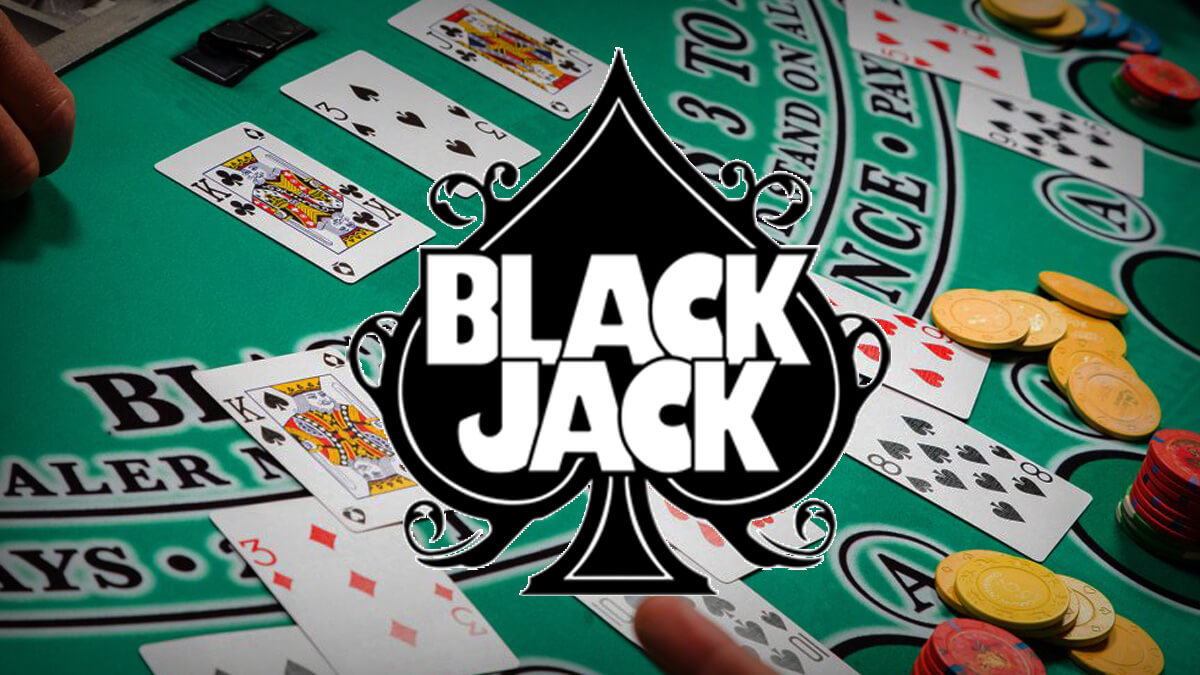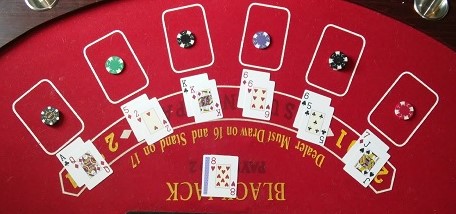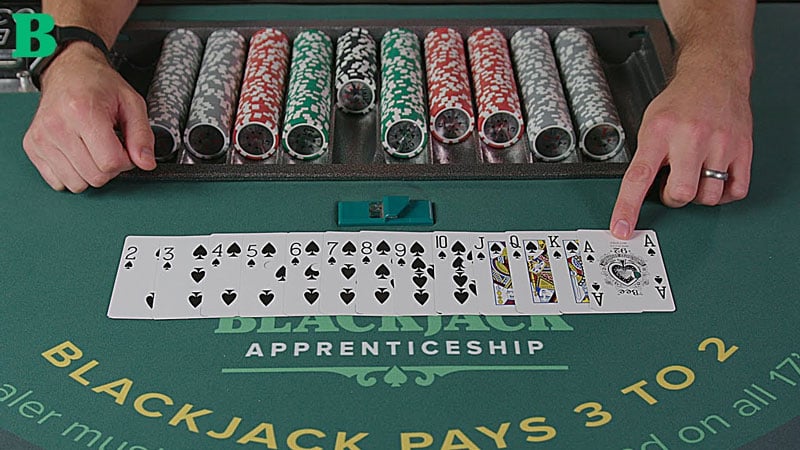How Many Chips Do You Start With In Blackjack
- How Many Chips Do You Start With In Blackjack Real Money
- How Many Chips Do U Start With In Blackjack
- How Many Chips Do You Start With In Blackjack
- How Many Chips Do You Start With In Blackjack

Security Features in Modern Casino Chips. Gambling chips look very simple in design but there is a lot of thought and processing involved to keep casinos and players safe from theft and fraud. Over the last 100 years, the humble chip has evolved in many ways and is currently becoming more technologically-based as. As a standard rule, white chips are worth 1 currency unit, red chips are worth 5 units, green 25, black 100 and purple 500. Blackjack is played with a standard international deck of cards with the Jokers removed, leaving 52 cards. Originally the game was played with a single deck. If you are hosting a poker event with up to 10 players, experts suggest that you have about 500 chips in three or four basic colors. In the event that you are hosting a larger game involving up to 30 people, a collection of 1,000 chips in four or five colors is recommended.
How Many Chips Do You Start With In Blackjack Real Money
How many chips do I need?
There is no 'perfect number...'... and there's no exact answer to this question. The chips you'll need will vary, based on what game you are playing, how many people you are hosting, and your stakes and minimum bets. Oddly, you'll find if you try to follow all these suggestions at once, the numbers will never work out quite right. But there are some general guidelines on how many chips you should have on the table when the first hand is dealt. Key questions to decide before you play: What game will you be playing? How many players will be playing? What will your stakes be? (Cash, prizes, or points-only?) How much will players be comfortable betting? Buy-in and minimum bets Your buy-in will be the amount a player will plan to risk at the whole event, all day or all evening. Most players are comfortable playing for an amount equal to the cost of an evening out in your area. If you're not sure how much your players will be happy to risk at your game, ask! (One national online poll suggests most home game players prefer to play for between $20 and $50 per event.) Setting the value of your minimum bets The minimum bet will be the lowest bet a player can place in the early rounds of play. Many card rooms require you to buy in for between 40 and 100 times the minimum bet, to allow each player to play in lots of hands. After you've decided these questions, here are some suggested rules for buying and distributing chips to your players: 1. Plan on having about 40 to 60 chips per player at the start of your game. (Some sites suggest 80 to 100 chips.) 2. Have some extra chips if you will be allowing re-buys, chips your players can buy after they 'bust,' or lose all their chips.Remember, not all your players will need re-buy chips. Someone has to be winning. A re-buy can be for any set amount, and could be for a new start, an amount equal to the original starting amount. You could use high-value chips for re-buys, allowing players to make change with other players and saving you the cost of more chips. 3. You should use at least three or four denominations of chips, with each chip color representing a different value in points or cash. (You can also buy denominated chips, with cash values printed on them.) Now you know about how many chips you'll need for all your players and the whole game. It's: (Players) x (Preferred number of chips) + (re-buy chips) Defining chip values and denominations Whether you're playing for points or cash, each chip will represent a value, with different color chips each representing a different value. Whether you're using denominated chips (with cash or point values printed on them) or non-denominated chips, the values of the different chips colors should be separated by factors of four or five. (Example: $1, $5, $25, $100.) If your chip denomination values are too close together, you probably won't use all your chips, and you'll buy more chips than you need. (Example: A player can bet two 25-cent chips to make a 50-cent bet, rather than having both a 25-cent and a 50-cent chip.) How many of each denomination?After you've determined the values of the different color chips you'll be using, you may wonder how many of each value / color to give to your players at the start of the game. Many experts suggest fol- lowing the 'four-three-two-one-rule.' The rule suggest that for every 10 chips you give out, their values should be: Four of your lowest value chip Three of your next higher value chip Two of your second-highest value chip One of your highest value chip Modifying the rule Depending on the amounts your players will be betting, the four-three-two-one rule could make your high-value chips too high for your players, or drive up the buy-in. Instead, you could easily use a 'four-two-one' rule,' or another ratio that suits your game. Why using too few chips won't work If you issue too few chips to your players at the start of the game, you may change the way players bet. If a player starts with a smaller number of higher value chips, they may fold more often, risking a chip only when they have a good hand. Other players will quickly pick up on this, and the dynamics of your game will be changed. Using non-denominated chips? Post a sign. If your chips are not denominated, you should have a clear sign -- and maybe two signs -- indicating the value of each color chip, so there's no confusion about their value. This will keep players from betting more than they intended. Using blinds and minimum bets In tournaments, increasing the 'blinds' and minimum bets over time means as play progresses, players need to place increasingly higher bets to stay in the game, increasing the value of the pot and forcing players to risk more. It drives your group toward determining a winner. Increasing blinds are common, but are not required in your game. Many friendly cash games don't require increasing ante or blinds. | 'Coloring Up' When your minimum bets or blinds increase past the value of your lowest-value chip, you can clear the table of those low-value chips. If a player has lots of low-value chips, change them for a chip valued at the new minimum bet. Take breaks! Most events have a scheduled starting time. Adding breaks at specific times can be useful. Generally, the hand on the table at 'break time' is finished, and then there is a defined break (15 minutes, etc.). This will allow your players to get something to eat away from the table, avoiding the inevitable spilling of food on your beautiful card table. Making sure your home chips stay at home Chips and cards should stay on the table during play and during breaks. Record what each player received as a 'starting stack' at the beginning of play, and the total number of chips you began with for your event. Do a 'chip count' following your event, and ask trusted players to assist in the count. Ending your event How and when your event will end should be decided and announced to all the players before starting. If you plan to play until someone wins all the chips, everyone involved should be aware that they could be playing for a long time. If you have a specific ending time, you should announce it ahead of time. Generally, the hand on the table at your ending time is finished, and no more hands are dealt. Also, ask at the start of your event if any players need to leave before the end of the event, eliminating any bad feelings if a player happens to be winning when he or she leaves early. Three options for your game setup: Play for points -- It's simple. Just give everyone the same number and value of chip 'starting stacks.' Play until everyone but the top player is out of chips. You can play for bragging rights only, or award a prize to the top player. You can also modify this plan to award prizes to the top two or top three players in your group. Or announce a specific 'ending time' to your game and the winners will be the players with the most points at that time. Play cash games -- Simply determine what stakes your players are comfortable with -- the total they'd risk in the game all night. Most people are comfortable in games where the stakes are equal to a typical evening out in your area. Players can play for cash using casino chips -- denominated with their real values or non-denominated with cash values assigned to them. Always make sure your cash game is legal where you are playing. Use our starting stack charts -- People who've hosted lots of tournaments usually know exactly how many chips they'll need, and how long their event will be. If you're reading this, and you're new at hosting a poker night or tournament, you may want to try one of our chip breakdown charts. (You are free to copy and paste the chart images.) Our '240-chip Low-Limit Cash Game' chart is designed for a small group of up to five to play for up to $50 each in cash. This is how most people played poker before the popularity of Texas Hold 'em and houses big enough for 10-seat poker tables. It requires a small set of 240 chips using the 4-3-2 denomination ratio. Your game should last up to about three hours or until a designated 'last hand' time, and there will be some of each chip leftover for re-buys. You can buy a set ofKey West chips like thishere. You can seat up to six players with a 300-chip T1000Tournament Set using the following chart. It's perfect for a poker night or small tournament at home, with up to six players starting with 1,000 points ($1,000 in chips). You can buy a set of Key West chips like thishere. Our 'Perfect' 500-chip set is the number and breakdown most recommended for home games by the experts for longer tournaments. You get 500 chips in the 4-3-2-1 ratio, perfect for seating up to 10 players for a full evening of tournament-style play. Each player starts play with 2,000 points ($2,000 in chips). You can buy a set of Key West chips like thishere. Permissions: You have permission to copy and use any of these charts for your own use in legal home poker games or at licensed charity or card room games or events, or when your game is played for points only among friends and family. No permission is granted to copy or use these charts to engage in any activity prohibited by your local laws. |
How Many Chips Do U Start With In Blackjack
Altered payout for a winning blackjack In many casinos, a blackjack pays only 6:5 or even 1:1 instead of the usual 3:2. This is most common at tables with lower table minimums. Although this payoff was originally limited to single-deck games, it has spread to double-deck and shoe games. Once the chips are counted, the dealer will drop your cash into a slot on the blackjack table and push your chips to you—do not reach for them until the dealer moves his hands away. The house needs to be sure that the dealer did not slip additional chips into your stack or your hands, so the camera will need to record the dealer’s hands.
How Many Chips Do You Start With In Blackjack


How Many Chips Do You Start With In Blackjack
